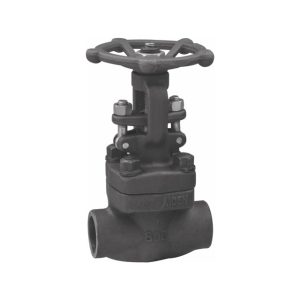Table of Contents
ToggleIt’s easy to be confused when it comes to gate and ball valves.
Ball and gate valves vary in a few vital ways, even though they sound incredibly similar. Consumers are also confused about the difference between the two and which the better fit for their specific needs is. We’ll talk about what they are and what they needs better represent here.
Valves for balls
Ball valves, also known as “shut off valves,” are the only way to stop the flow of water immediately. Immediate redirection is impossible with gate valves. Machined stops prevent most ball valves from moving more than 90 degrees, except for 3-way ball valves. Ball valves are available in several settings.
Valves for gateways
A round knob on a gate valve is usually turned to control the water flow. To stop or start the water, this raises or lowers an internal gate. A spigot on garden hoses is an example of this. Rather than simply turning it off or on, gate valves give users control over the flow pressure. Gate valves provide users to significantly more control over water flow and pressure than ball valves but do not allow for an immediate stop of flow. Stainless steel gate valves are extremely hardy and no more prone to corrosion than ball valves for those aiming to use gate valves but concerned about corrosion.
Why do you use a ball valve instead of a gate valve?
With so many different valves on the market today, deciding which one is best for your application can be challenging. BM Engineering Supplies examines the advantages of ball valves over gate valves in this article.
The valve you choose will make or break your machine. Both ball valves and gate valves are used to monitor and limit flow. Which, on the other hand, has a longer lifespan and prevents leaks? Continue reading to find out.
What is the big distinction between gate and ball valves?
The work of both ball and gate valves is the same. Their structural characteristics, however, are vastly different. Ball valves, also known as “rotational” valves, have a stem and a ball that rotate horizontally. They’re best for applications that need pressure-free on/off the power.
Gate valves open by removing a round or rectangular gate from the fluid’s course. Since the sealing surfaces among the gate and seats are planar, gate valves are commonly used when a fluid flow in a straight line with minimal restriction is needed.
What is a ball valve and how does it work?
The interior of a ball valve is built with a ball. A ball valve is a form of quarter-turn valve that reins flow through a hollow, perforated, pivoting ball (known as a “floating ball”). It is open when the ball’s hole is equivalent to the flow and closed when the valve handle is pivoted 90 degrees. While the valve is open, the handle is flat in line with the flow, and when it is closed, it is perpendicular to it, allowing for simple visual confirmation of the valve’s status.
Gate valves or ball valves: which is better?
Ball valves are robust and reliable, working well after several cycles and closing tightly even after extended periods of inactivity. These characteristics make them an excellent choice for shutoff applications, where gates and globe valves are often favored. However, in throttling applications, they lack sufficient power.
Although ball valves are slightly more expensive than gate valves of comparable quality, the small cost savings is not worth the potential problems. Furthermore, due to their 100% shut-off characteristics, ball valves close much tighter than gate valves and are therefore much less susceptible to leaks. Ball valves are more durable, have a lower failure rate, and are easier to use than gate valves.
Valve Types: Ball Valves vs. Gate Valves
The key distinction between ball valves and gate valves is that ball valves are smaller.
Before we can answer whether ball valves are better than gate valves, we must first understand the main differences between the two. The first thing to remember is that they both perform the same role, so they are so similar.
The structural differences between ball valves and gate valves and how they are labeled are the most significant. Ball valves have a ball and a stem that turn horizontally, while gate valves open by raising a round or rectangular gate out of the fluid’s direction. Ball valves are sometimes mentioned to as rotational valves because of this.
A sealing surface separates the gate and the seats in the gate valves. As a result, they’re often used when a fluid flow in a straight line with minimal restriction is needed. Ball valves behave differently than quarter-turn valves because they are a type of quarter-turn valve. To control flow, they use a hollow ball that is both perforated and pivoted. When the ball’s hole is parallel to the flow, the valve is open. It closes when the valve handle, which is flat and pivoted to 90 degrees, is level with the flow when open and perpendicular when closed. This makes visual confirmation of the valve’s status easy.
Is it true that ball valves are superior to gate valves?
To settle the ball valve vs. gate valve controversy, we reached out to BM Engineering Supplies, a leading Scottish industrial valve distributor with both types of valves. They say that a ball valve’s advantage over a gate valve is that they close much tighter, preventing leakage better than gate valves. This is due to their ability to shut down completely. They’re much simpler to use than gate valves, with lower failure rates and longer life.
Ball valves are a great option for shutoff applications because of their reliability. They have a high level of consistency over several cycles and durability, and the ability to close securely even after extended periods of inactivity. They are often favored over gate and globe valves for these reasons.
Both types of valves limit and regulate flow, and you want the right type of valve for your plumbing project to ensure durability and leak prevention.










